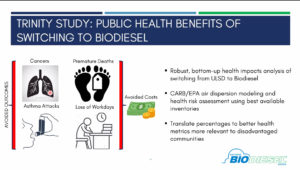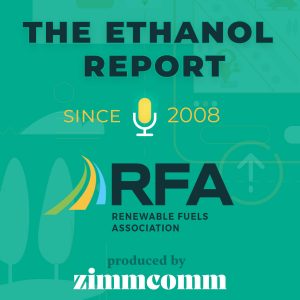 Al-Corn Clean Fuel in Claremont, MN, is celebrating 25 years of successful operations this week.
Al-Corn Clean Fuel in Claremont, MN, is celebrating 25 years of successful operations this week.
On April 29, 1996 the process of converting corn into ethanol began with the first corn being ground. Originally constructed as a 10 million gallon a year facility, Al-Corn has undergone a series of expansion and modernization projects and now produces 125 million gallons annually. Each year the company grinds over 42 million bushels of corn and can produce 269,000 tons of high protein livestock feed, as well as 44 million pounds of corn oil.
“While some may say we are a ‘first-generation’ ethanol plant, the reality is we are in the forefront of the ethanol industry due to our relentless focus on continuous improvement” said Al-Corn CEO Randall Doyal, who is also past chair of the Renewable Fuels Association (RFA). “Al-Corn continues to utilize innovative technologies and creativity in order to reduce energy consumption and production costs while at the same time increasing efficiencies and reducing emissions.”
Al-Corn joins Chippewa Valley Ethanol Company (CVEC) of Benson, Minnesota in celebrating 25 years this month. RFA President and CEO Geoff Cooper notes that both Al-Corn and CVEC were essential contributors to what became known industry-wide as the “Minnesota Model” – a grassroots effort focused on developing policies and public-private partnerships to facilitate growth and local ownership in the state’s ethanol industry. The state’s comprehensive approach to supporting ethanol became a model for other Midwestern states to adopt.


 The
The  Comments from the
Comments from the 


 The
The  Indiana Governor Eric Holcomb this week vetoed legislation that would have a negative impact on sales of 15% ethanol fuel (E15) in the state.
Indiana Governor Eric Holcomb this week vetoed legislation that would have a negative impact on sales of 15% ethanol fuel (E15) in the state.  The biofuels industry had its day in the Supreme Court April 27 to present oral arguments in the case of
The biofuels industry had its day in the Supreme Court April 27 to present oral arguments in the case of  Matthew W. Morrison, Pillsbury Winthrop Shaw Pittman LLP, represented
Matthew W. Morrison, Pillsbury Winthrop Shaw Pittman LLP, represented  Oral arguments before the U.S. Supreme Court are scheduled for Tuesday morning in the case of HollyFrontier Cheyenne Refining, LLC, et al. v. Renewable Fuels Association, et al over small refinery exemptions under the Renewable Fuel Standard (RFS).
Oral arguments before the U.S. Supreme Court are scheduled for Tuesday morning in the case of HollyFrontier Cheyenne Refining, LLC, et al. v. Renewable Fuels Association, et al over small refinery exemptions under the Renewable Fuel Standard (RFS). The
The